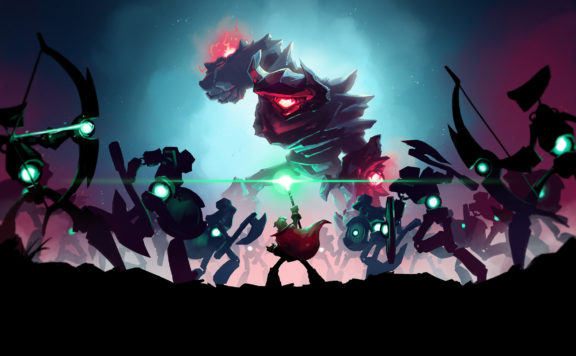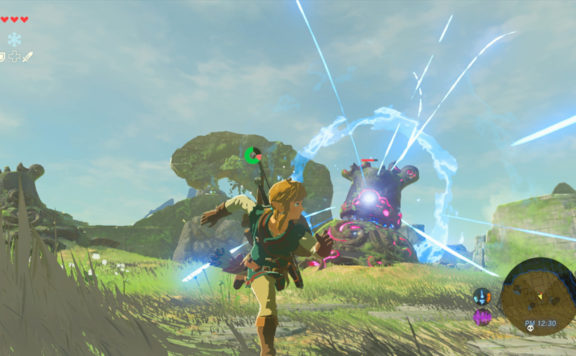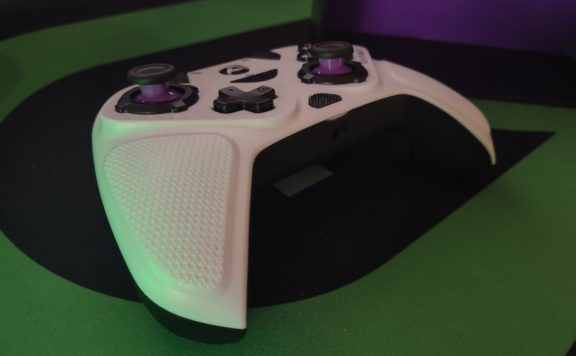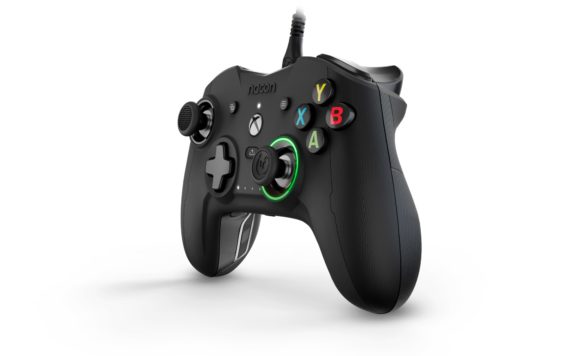The Shadow Desktop is about to unhooked gaming desktops for a whole host of new consumers. This gaming desktop in the cloud is heading to a host of new territories and loading up a ray traced Power Upgrade on 26 October. We got hands on with the new Shadow Desktop Power Upgrade, but not before heading out the door on holiday. So, we nabbed our sunglasses and set course to find out exactly why this gaming desktop upgrade makes sense at home and between the bustle of an airport lounge.
For those that missed the news, gaming desktop as a service company Shadow is expanding. It recently turned on cloud gaming machines for a swath of new consumers, including players in Austria, Canada, Italy, and more, while booting up a Power Upgrade enhancement option for available territories. Coming in at 29,99€/$/£ or 39.99$ CAD for the base setup and an extra 14,99€/$/£ or 19.99$ CAD for the brand new level up, swapping your ailing GTX for this online powerhouse might come with a few questions.
The Tech
Shadow first emerged many Gamescoms ago, when I covered the upstart French internet company for MMORPG.com. Promising a gaming machine in the cloud, and showing off Street Fighter streaming down a 4G cellular connection, Shadow seemed like a world away from earlier OnLive attempts that ended up filling screens with pixelated superheroes and laggy cityscapes. Instead, it gave consumers a powerful gaming desktop that seemed to perform with incredible speed and stability without the up front investment in a gaming rig. In essence, that core idea hasn’t changed. Accessible across any iOS, Android, Linux, Apple, or Windows device that can boot up the Shadow client, the base desktop provides a responsive and capable configuration for gamers looking to get going with the minimum of fuss.
Base Config
- GPU: GeForce GTX 1080 Or equivalent
- Processor: Intel XEON 3.5 GHz Or equivalent (4 cores / 8 Threads)
- Memory: 12 GB
- Storage: 256 GB SSD Upgradable up to 2 TB HDD
- Operating System: Windows 10 64-bit
Power Upgrade
- GPU: NVIDIA GeForce RTX 3070-class or AMD’s latest RDNA 2 based GPU
- Processor: AMD EPYC 7543P – 2.8 GHz (up to 3.7 GHz) or Equivalent (4 cores / 8 Threads)
- Memory: 16 GB
- Storage: 256 GB SSD Upgradable up to 2 TB HDD
- Operating System: Windows 10 64-bit
Unlike the Xbox Games Pass or GeForce Now, Shadow provides more than the ability to stream a gaming catalog. The entire OS is included. Subscribers are not at the behest of Shadow, and even if the service went sideways, game progress wouldn’t end up in Google Graveyard. Xbox Game Pass, GeForce Now, Steam, Uplay, Arc, and a dozen other distribution platforms simply work, and in game progress will simply synch over with your game saves. If it runs on PC, it runs on Shadow. Gaming necessitates incredible performance. The recently announced Power Upgrade ushes this even further, cramming in the following extra components to any existing online desktop:
Upgrade Incoming
Recently launched, the new Power Upgrade is an obvious improvement to graphical fidelity, local performance, and capacity. It won’t overcome physics and continues to use a familiar localized strategy to bring hardware as near paying eyeballs as possible. This ensures that response times continue to sit in the milliseconds and should provide some seriously impressive gaming performance, even on a lowly netbook.
Attributions of excellence aside, the numbers don’t lie. Shadow Desktop manages a Timespy score of 8807. This brings the power upgrade in roughly the same performance level as my own desktop build. A quick comparison notched up an 11,593 score using my own desktop. This might not be a direct comparison, but a desktop system running a Ryzen 5 3600X and an RTX 3070 FE seems to be a reasonable equivalent for those keeping their gaming in house.
While this provides a clear comparison, running a Shadow of The Tomb Raider Benchmark on both machines inverts those podium places, with the Shadow system clocking in an average frame rate of 102 FPS against the local 73 FPS., with the settings pushed way up. Realistically, this sets up a gaming system that is likely to excel in modern gaming scenarios and should hold up during the odd spot of intense 4K action.

Shadow of the Tomb Raider on Shadow Power Upgrade

Shadow of the Tomb Raider Benchmark on a 3070 powered local PC
At Home And Playing Away
When I finally got to grips with the Shadow Desktop and the latest upgrade option, I was on the cusp of a long trip out to the home of Nexon, Neowiz, and NCSoft. Thankfully setup and configuration on something as underwhelming as a budget Chrome OS tablet wasn’t about to make me late to board my morning flight. barely a few clicks are required to setup and get started. Unlike some other solutions, such as Rainway, there’s no web view for Shadow users. Instead, the Shadow client is a lightweight bit of kit, clocking in at barely a few hundred MB and never asking for more than 200MB of memory on my desktop. As the benchmarks attest, it is appreciably more responsive than many more anemic virtual machines with a short trip to a regional data centre that seems to be teeming with hardware and bandwidth.

cloudflare speed test – run on the Shadow desktop
After a couple of minutes of configuration, which checks the client network, external internet connection, and hardware, subscribers are readily patched into a remote desktop hosted by Shadow.
Anybody who has had to remotely navigate a computer will likely find this is like leaping from Mario Kart into Wipeout. A familiar core experience is booted up but supercharged. Xbox, Playstation DualSense, and Switch Pro handhelds are accepted by the Shadow Desktop without a glitch. At home, even my Oculus Rift headset worked without any appreciable skipping, delay, or stuttering, partly thanks to a recent WiFi 6 upgrade and a 1Gbps internet connection line at home. You can check out the performance difference between WiFi 5 and 6 in our WiFi 6 comparison, but if you will want the fastest connection possible to appreciate the full power of this cloud offering.
Planes, Trains, & Tomb Raider
Away from the desktop, things are more mixed. Lounging in an airport ahead of departure, I took Shadow on the go and tried to finally play some games on my Macbook Pro. The experience was something I wasn’t entirely prepared for. The almost seamless process of turning on and plugging in at home was transformed into an obstacle course of technical tweaks. Between Apple’s unwaveringly underwhelming support for game controllers and an extremely leggy 2.4 Ghz WiFi signal, the Shadow Desktop was as underserved by my groundside setting and Bootcamp remains my only choice for Macbook gaming right now. Casting OSX aside for something from the Google ecosystem was a vastly different experience. As if designed to simply sidestep the issues I had on my Macbook, the Shadow Android client booted up started running DOOM, detected an appalling connection, shifted to low bandwidth mode, and started popping off unfettered violence at 120FPS, something that finally pushed my Moto G200 display up towards its top end of 144Hz.

On a small screen, without the need to render 32 inches of gore, games presented well, responses felt fluid enough to play using an Xbox controller or the on screen virtual controls. Even bouncing around at around 5MBps, Shadow has a system that could easily fill in for my well worn Nintendo Switch console. As if gutting the denizens of Hell wasn’t impressive enough, things also turned to train station tomb raiding. Normally a Lenovo Duet Chromebook barely packs enough power to shoot out a few emails, never mind contain the Doomslayer. You’ll be happy to learn that despite this, the Shadow client didn’t just run on waiting room WiFi, the resulting connection during a train station stop over had Shadow of the Tomb Raider running well enough to overcome the opening encounters. While these small screen comparisons are not optimal for competitive gaming or the unforgiving quest for an Elden Ring, they proved more than capable of gaming at a leisurely pace on creaky public WiFi.
A Mobile Gaming Revelation
A high spec cloud gaming desktop might seem like a niche proposition for consumers used to handling their own hardware, and an even harder sell for anybody who splashed out on a top end gaming smartphone. I’m convinced that even before factoring in the Power Upgrade, Shadow offers some serious advantages over the established norms. While I’m not a huge fan of hooking up cradles and snap on control pads to my mobile, you’ll get far better performance and choice in the cloud than simply letting the latest expansion from HoYoverse overheat a humble handheld device. While traveling with Shadow’s latest offering was far from our intended choice, this escapade uncovered a few of the cloud system’s more unexpected benefits. With mobile platforms adorned by AMOLED screens, refresh rates of 120Hz, 5G bandwidth and low power designs, the Shadow Desktop could easily be a mobile game changer for anybody who hasn’t been seduced by the gacha nightmare of traditional on the go gaming.
Power, Performance, Price
With simply incredible performance on a tiny screen or a lightweight tablet, it’s no surprise that the cost of running a Shadow Desktop is lower than any local rival. We ran Shadow on a slimline Lenovo Duet Chromebook to test the power draw and compared it to our aforementioned desktop equivalent. In an unscientific attempt to demonstrate the gap in cost, we booted up each device, ran Shadow of the Tomb Raider Benchmark, and allowed the system to idle for an hour without any power saving functions turned on. The power consumption of the base computing unit was measured at the outlet. The Lenovo Duet drew a total of 0.005 KWh over the course of an hour averaging around 5W throughout. Our local desktop system drew a much larger 0.2 KWh of electricity over that same time period.
This is illustrative and points to a mammoth chasm in home power consumption. While it’s disingenuous to point to a direct difference in overall power consumption, since a data center uses power too, an average UK household on the current price cap would pay 0.17 pence to turn on our Lenovo Duet while a physical alternative to Shadow would clock in at around 7 pence per hour. It might not seem like much but when the up front outlay for an upgrade can be spread over years and run on a lightweight client, then there’s a potentially compelling argument.
Back To Reality
As I finish up this hands on, I’m finally back to a more reasonable time zone, the holiday is over, and it’s time to face reality again. For Shadow, that means competing against a whole slew of game streaming services. Sure the European outfit’s own desktop as a service is great to use, but it is also expensive. GeForce Now and Xbox Game Pass Ultimate are two of the most noticeable alternative options, and these games as a service models undercut the base price of Shadow Desktop or its Power Upgrade. Even self hosted services like Parsec and Rainway provide an attractive alternative to anybody lucky enough to afford a new GPU, and still able to splash out on any games afterward.
That said, Shadow doesn’t just do online gaming. The desktop setup is accompanied by a Shadow Drive service that looks likely to build an online storage system and, eventually, a set of services that mark a definitive step towards a secure set of productivity tools to rival the big players in this industry. In short, it’s way more flexible than a console in the cloud. With clear ground between the desktop provider and its competition, perhaps it is the cost that will be the deciding factor for consumers. With the pound in peril, inflation running rampant in the UK, energy prices spiraling out of control, and a long winter coming for many of us in Europe, hooking up a new Chromebook to a halfway decent monitor could net you years of a new PC without the worry of any nasty surprises.
Whether it’s home or away The Shadow Desktop is available now across France, UK, US, Germany, Austria, and Canada right now. Italy, Sweden, Denmark, and Spain are coming soon. The Shadow Desktop Power Upgrade is going live on 26 October. To check on availability in your region and find out more about Shadow, check out the official website now.







